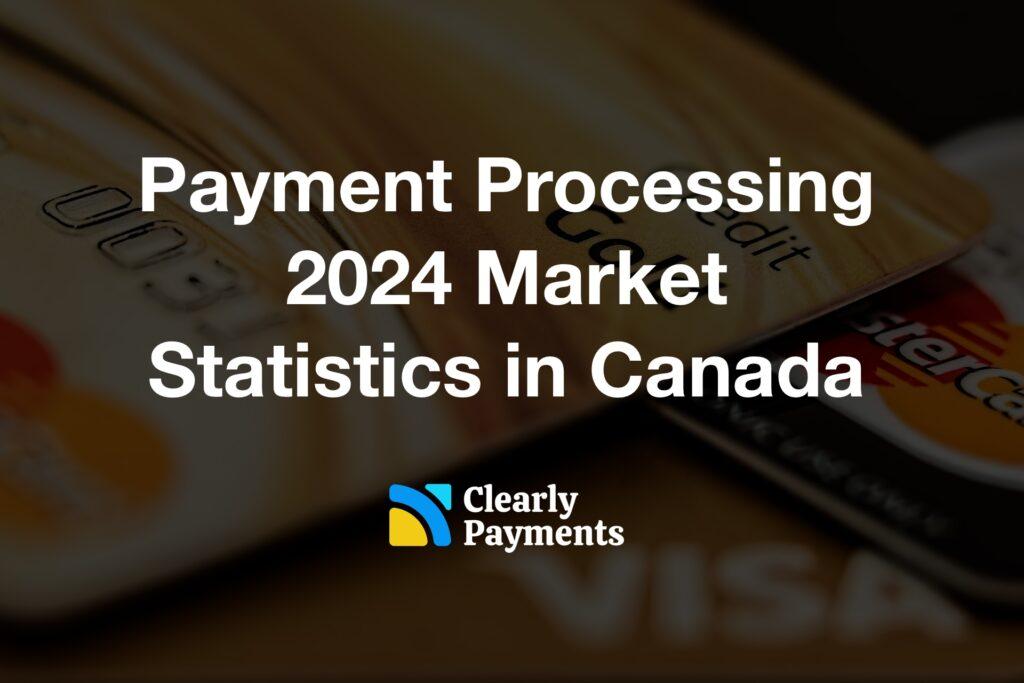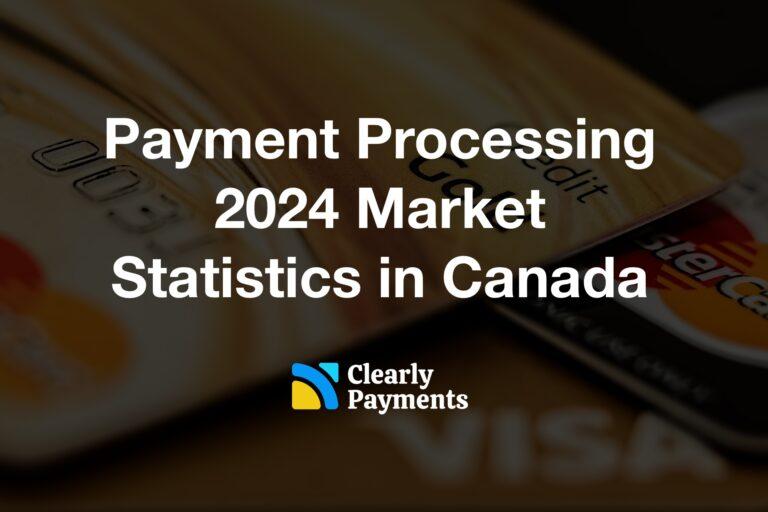In this 2024 report, we’ll explore how payment methods have evolved in the Canadian market, focusing particularly on the shift towards digital, contactless payments, and mobile along with other 2024 trends. We’ll delve into the impact of this trend on businesses, including the challenges and opportunities they face in adapting to changing consumer preferences.
We’ll examine the latest data from TRC-Parus, other sources, and the Statistics Canada survey conducted in 2023. This will shed light on the payment methods embraced by businesses and consumers across various industries, sizes, and geographical locations.
Join us as we uncover the Canadian payment processing landscape and gain insights into the driving forces behind businesses’ choices in this dynamic market.
The Number of Businesses in Canada
Let’s take a closer look at Canadian businesses – the heartbeat of our economy. Canada is home to a bustling entrepreneurial scene, with 1,326,321 employer businesses and another 2,951,629 non-employer businesses. Non-employer businesses are simply single businesses with no employees.
When it comes to size, small businesses lead the pack, making up a staggering 97.9% of employer businesses – that’s around 1.19 million businesses driving the Canadian economy forward. Medium-sized businesses make up 1.9%, while large businesses hold a 0.2% share.
In terms of regions, Ontario and Quebec take the spotlight as entrepreneurial hubs, hosting over half of Canada’s small employer businesses. However, Western Canada, led by British Columbia, also boasts a significant number of small businesses, with Nova Scotia leading the charge in the Atlantic region.
The Payment Processing Market Size in Canada
Canada’s payment processing market is a vibrant and swiftly evolving industry, propelled by tech-savvy people, a flourishing eCommerce scene, and ongoing innovation. While precise market size estimates may vary, the overarching theme is clear: it’s an expansive and ever-expanding market.
TRC-Parus values the Canadian payment processing market at $712 billion annually. GlobalData places the value at $744.8 billion in 2023, foreseeing a Compound Annual Growth Rate (CAGR) surpassing 6% until 2026. On a more optimistic note, Mordor Intelligence predicts a robust CAGR of 15.4% for the 2022-2027 period. These figures paint a consistent picture of a thriving market with significant growth potential. The drivers behind this growth are multifaceted.
Digital Only Banks or Neobanks
The emergence of digital-only banks injects competition, propelling the use of debit cards and credit cards, impacting the overall payment processing market. Digital banks, sometimes called Neobanks, push consumers into digital banking and digital payments.
In Canada, the big five banks’ oligarchical dominance persists, holding a 90% market share. The big five banks in Canada are Royal Bank, The Bank of Montreal, Canadian Imperial Bank of Commerce, The Bank of Nova Scotia, and Toronto-Dominion Bank. Credit unions have more than tripled their market share since 1982 and held 13% of consumers in 2023.
Neobanking is growing, and transaction value in the Neobanking market is projected to reach $140 billion in 2024. Keep in mind that users of Neobanks are likely to still have bank accounts at more traditional banks and credit unions for the time being. Therefore, there is some double counting of users. The number of users is expected to amount to 5 million users by 2028. User penetration will be 9.5% in 2024 and is expected to hit 12% by 2028.
The Neobanking market is booming thanks to several key factors. People want banking that’s easy and always available, and the internet and digital tech make that possible. Plus, people’s banking habits are changing. Neobanks also tend to be cheaper and more flexible than traditional banks, which makes them popular. This trend is expected to keep going up. More and more people have smartphones, and they want to do their banking digitally. The fintech world is also growing, which helps Neobanks. Neobanks are teaming up with traditional banks, too, which should get more people using Neobanking services.
Online Payments and eCommerce
Canada’s e-commerce and online payments market is ablaze with growth, poised to reach $100 billion by 2024, marking it as one of the most vibrant sectors in the country. Driving this surge are several factors contributing to the convenience and accessibility of digital shopping. With over 80% of Canadians owning smartphones, shopping has become effortless, transforming pockets into virtual shopping malls. The demand for swift and touchless transactions has propelled online purchases to new heights, while the rise of contactless tap-and-pay options and “Buy Now, Pay Later” (BNPL) schemes is offering consumers enticing flexibility.
From baby boomers to Gen Z (people born between 1981 and 1996), Canadians of all ages are embracing the digital shopping experience, with 70% of Canadian e-commerce vendors expected to offer BNPL by the end of the year, marking a substantial increase from 2023. Mobile wallets like Apple Pay and Google Pay are swiftly overtaking traditional payment methods on smartphones, while social media platforms such as Instagram and TikTok are evolving into bustling shopping hubs, complete with seamless one-click checkouts.
However, amidst this rapid growth lie challenges that businesses must navigate. Cybersecurity threats loom large, with data breaches and online fraud posing significant risks that demand robust security measures. Moreover, fierce competition in the crowded e-commerce landscape necessitates innovative offerings and personalized experiences to capture consumer attention. Efficient and cost-effective delivery solutions are crucial for businesses to stay competitive, while the ever-changing regulatory landscape surrounding privacy and online payments requires careful navigation to ensure compliance.
Despite these challenges, the Canadian eCommerce and online payments market continues to flourish, presenting abundant opportunities for businesses willing to adapt and innovate in this dynamic digital landscape.
Payment Methods Accepted by Canadian Businesses
In the realm of Canadian businesses, cheques maintain a firm foothold, with a substantial 73.4% of businesses relying on them in the third quarter of 2023, as reported by Statistics Canada. However, the digital era is swiftly advancing: 58.9% of businesses are embracing Electronic Funds Transfers (EFT) as their second most popular choice. Overall, the use of cash and checks is decreasing quickly.
Accepted Payment Method | Percentage of Businesses |
|---|---|
| Cheques | 73.40% |
| EFT | 58.90% |
| Cash | 55.30% |
| Credit Cards | 54.40% |
| Interac e-transfer | 50.00% |
| Debit Cards | 38.50% |
| Wire Transfer | 15.20% |
Cash and credit cards also maintain popularity, with 55.3% preferring cash and 54.4% using credit cards. Meanwhile, Interac e-transfer, a digital favorite, is chosen by 50% of businesses.
Looking ahead, 75.2% of businesses plan to adopt more digital and contactless payment methods in the next year. Interac eTransfer leads the pack with a projected 20.2% increase, followed by EFT, wire transfer, and debit cards.
However, not all businesses are jumping on the digital bandwagon. Some find their current payment methods sufficient (42.5%), while others cite service fees (38.7%), security concerns (35.5%), and integration challenges (29.2%) as barriers to adopting new options.
Digital Currency and Payments in Canada
In 2024, the Canadian digital currency market has experienced a notable surge in mainstream adoption, driven by increased media coverage, educational initiatives, and expanding use cases such as retail payments and cross-border transfers. This surge has led to a significant uptick in cryptocurrency ownership among Canadians, estimated to be between 15-20%, representing millions of users. Moreover, institutional investors have increasingly entered the market, seeking diversification and potential returns. As a result, daily trading volume on Canadian cryptocurrency exchanges now exceeds $1 billion, showcasing the growing prominence of digital assets within the Canadian financial landscape.
Furthermore, regulatory clarity has improved, with the Canadian Securities Administrators (CSA) issuing clearer guidelines for cryptocurrency trading platforms and investment products. This regulatory clarity has been instrumental in attracting larger players to the market, bringing $4 billion in assets under regulation. Additionally, the recent approval of U.S.-listed Bitcoin exchange-traded funds (ETFs) has provided local investors with easier access to this popular asset, potentially adding billions in capital to the market.
Despite these advancements, challenges persist within the Canadian digital currency market. Scams and fraud continue to pose a threat, with estimated losses reaching $32 million in 2023. Moreover, market volatility remains a concern, highlighted by Bitcoin’s price fluctuating by over 50% in 2024 alone. These challenges emphasize the importance of investors adopting a cautious and informed approach when navigating the digital currency landscape.
In response to market trends, investor interest has shifted towards cryptocurrencies with real-world utility, moving beyond short-term speculation. Additionally, the Bank of Canada’s active research and experimentation with a potential Central Bank Digital Currency (CBDC), a digital version of the Canadian dollar, further underscore the evolving nature of the Canadian digital currency market.




